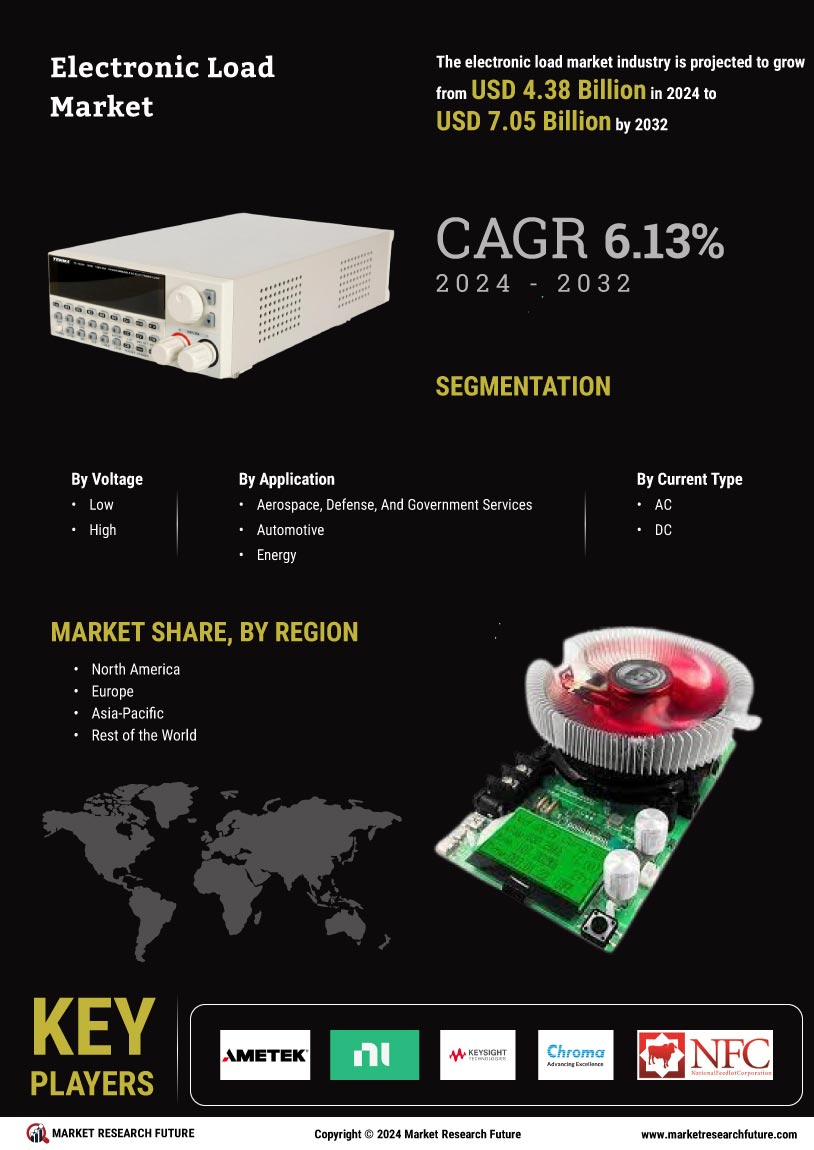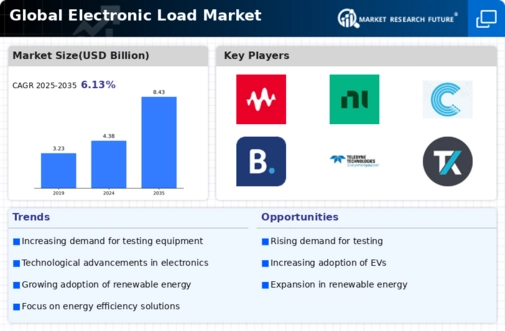Market Growth Projections
The Global Electronic Load Market Industry is poised for substantial growth, with projections indicating a rise from 4.38 USD Billion in 2024 to 8.43 USD Billion by 2035. This growth trajectory suggests a compound annual growth rate of 6.13% from 2025 to 2035, reflecting the increasing demand for electronic load solutions across various sectors. The market's expansion is driven by factors such as technological advancements, the rise of renewable energy, and the growing focus on electric vehicles, positioning the industry for a robust future.
Advancements in Technology
Technological advancements play a crucial role in shaping the Global Electronic Load Market Industry. Innovations in electronic load testing equipment, such as enhanced precision and automation capabilities, are driving market growth. These advancements enable engineers to conduct more accurate tests and simulations, thereby improving the overall performance of electronic devices. As industries increasingly rely on sophisticated testing methods, the demand for advanced electronic loads is expected to rise. This trend aligns with the projected market growth, indicating a robust future for the industry as it adapts to evolving technological landscapes.
Rising Demand for Renewable Energy
The Global Electronic Load Market Industry experiences a surge in demand driven by the increasing adoption of renewable energy sources. As countries strive to meet sustainability goals, the need for testing and validating renewable energy systems becomes paramount. Electronic loads are essential for simulating various load conditions on renewable energy sources, ensuring their reliability and efficiency. This trend is likely to propel the market, with projections indicating a growth from 4.38 USD Billion in 2024 to 8.43 USD Billion by 2035, reflecting a compound annual growth rate of 6.13% from 2025 to 2035.
Increased Focus on Electric Vehicles
The Global Electronic Load Market Industry is significantly influenced by the growing emphasis on electric vehicles (EVs). As governments worldwide implement stricter emissions regulations and promote EV adoption, the need for effective testing solutions becomes critical. Electronic loads are utilized to simulate battery loads and performance, ensuring that EVs meet safety and efficiency standards. This heightened focus on EV technology is likely to drive market expansion, contributing to the anticipated growth from 4.38 USD Billion in 2024 to 8.43 USD Billion by 2035, with a CAGR of 6.13% from 2025 to 2035.
Regulatory Compliance and Safety Standards
Regulatory compliance and safety standards are pivotal in shaping the Global Electronic Load Market Industry. As industries face stringent regulations regarding product safety and performance, the demand for electronic loads that can accurately simulate real-world conditions is on the rise. Manufacturers are increasingly required to ensure their products meet specific testing criteria, driving the need for advanced electronic load solutions. This regulatory landscape is likely to foster market growth, as companies seek to comply with safety standards while enhancing product reliability and performance.
Expansion of Telecommunications Infrastructure
The expansion of telecommunications infrastructure is a significant driver for the Global Electronic Load Market Industry. With the increasing demand for high-speed internet and mobile connectivity, electronic loads are essential for testing and validating the performance of telecommunications equipment. As network operators invest in upgrading their infrastructure to support 5G and beyond, the need for reliable testing solutions becomes more pronounced. This trend is expected to bolster the market, as the industry adapts to the growing requirements of advanced telecommunications technologies.

















